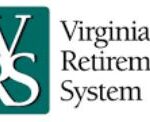Virginia’s “Diet COLA” approach to calculating annual inflation increases to Virginia Retirement System pensions has constrained the increases once again. Beneficiaries will see a benefit increase of 5% effective July 1, up from the 3.85% increase they received a year ago.
Both are below what they would have been if the increase had simply matched the full annual change in the consumer price index. The CPI-U measure of inflation for the calendar year 2021 was 4.7% and for 2022 was 8.0%. The compounded rise was 13%. But instead of rising those amounts, the VRS retirement benefits will have risen less than 10% over two years. (Those figures have been corrected since the initial posting.)
This is just one more example in the ongoing saga of how government gets richer by protecting itself against inflation, but not doing the same for its people (or its former employees.) The house (in this case, the treasury) always wins.
Had the full CPI-U amount been used, a $1,000 payment in August 2021 would have risen to $1130.76 this August. The the constraints it will be $1090.42. That is a difference of $484 over the year. The impact of the gap between real inflation and the “diet” COLA adjustment compounds with every additional year of benefits through the retirees’ lives.
It gets worse for some. The 2022 and 2023 adjustments mentioned above are the more generous provisions of VRS Plan 1, for employees who started with the state system before a less generous pension approach was adopted about a decade ago. Under Plan 2, which provides less defined benefits and instead supplements these with an investment match, the cost of living increase for the defined benefit portion of their monthly check will rise only 3%. It is constrained even more deeply than Plan 1.
The Plan 1 retirement COLA is capped at 5% and the Plan 2 COLA is capped at 3%. Both hit the statutory ceiling for the first time with this year’s adjustment. The larger benefit amounts will appear with the August 1 deposits. Plan 1’s COLA is below inflation in years where the CPI-U exceeds 3%, so it will probably happen again next July.
To be fair, many pensions have no cost of living adjustments at all and most investments are down compared to inflation, but the COLA was always part of the deal with VRS. The deal changed, however, when the General Assembly took steps to move away from a defined benefit plan to ensure that Virginia didn’t find itself challenged to meet its pension obligations.
Here is the actual paragraph on how the benefits are now adjusted for inflation.
The percentages shall be based on monthly averages and shall be the difference between (i) the average for the calendar year just ended and (ii) the average for the most recent calendar year used in the determination of the post-retirement supplements currently being paid. The annual increase, if any, in the CPI-U shall be considered only to the extent of the first two percent plus one-half of the next two percent of any additional increase, or a maximum increase in the post-retirement supplement of three percent in any given year.
However, for anyone who (a) is not a person who becomes a member on or after July 1, 2010, and (b) has at least 60 months of creditable service as of January 1, 2013, the applicable annual increase, if any, in the CPI-U shall be considered only to the extent of the first three percent plus one-half of the next four percent of any additional increase, or a maximum increase in the post-retirement supplement of five percent in any given year.
, 231,000 retired state and local employees, teachers, state and local police officers and judges were receiving retirement benefits from VRS. The total paid out exceeded $5.7 billion.
The 2023 General Assembly did pass several bills making it somewhat easier for retirees to keep VRS benefits and return to work. Call that a carrot to go along with the stick of benefits not keeping up with the real cost of housing, food, energy and health care.


Leave a Reply
You must be logged in to post a comment.